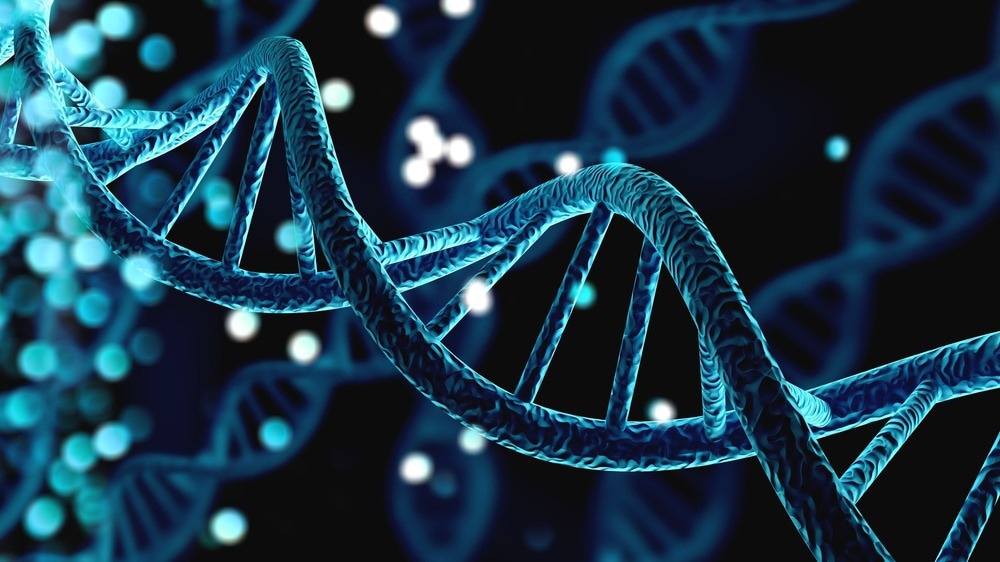A gene’s length may have more to do with aging than particular “aging genes.” Reduced expression of long genes may cause many aging-related changes, according to researchers writing an opinion piece published in the journal Trends in Genetics on March 21st, 2023.

Image Credit: Billion Photos/Shutterstock.com
Age-related decreases in the expression of long genes have been reported in a variety of animal species, including humans and worms, as well as in different human cell and tissue types and neurodegenerative disease patients. Experiments on mice indicate that known anti-aging factors, such as dietary restriction, can attenuate the phenomenon.
If you ask me, this is the main cause of systemic aging in the whole body.”
Jan Hoeijmakers, Study Co-Author and Molecular Biologist, Erasmus University Medical Center
Jan Hoeijmakers is affiliated with the University of Cologne and Oncode Institute/Princess Maxima Institute, Utrecht.
The authors represent four research groups from the United States, Germany, Spain, and the Netherlands, and each group used a different approach to arrive at the same conclusions.
Aging is linked to modifications in the molecular, cellular, and organ domains; these include changes in protein synthesis, suboptimal cell metabolism, and compromised tissue architecture. These alterations are believed to be the result of DNA damage brought on by repeated exposure to dangerous substances like UV rays or reactive oxygen species produced by human metabolism.
Numerous studies on aging have concentrated on particular genes that may speed up or slow down aging; however, there is no discernible pattern in the gene function of the specific genes more prone to aging. Rather, it appears that susceptibility is related to the lengths of the genes.
For a long time, the aging field has been focused on genes associated with aging, but our explanation is that it is much more random- it’s a physical phenomenon related to the length of the genes and not to the specific genes involved or the function of those genes.”
Ander Izeta, Study Co-Author, Biogipuzkoa Health Research Institute
Ander Izeta is also affiliated with the Donostia University Hospital in Spain.
Long genes have more potential sites that could be damaged, so it comes down to chance. The lengthier the trip, the greater the likelihood that something will go wrong, according to the researchers' analogy.
Some cell types are more likely than others to express long genes, which increases the likelihood that these cells will age with DNA damage. Relative to rapidly replicating cells, non-dividing (or very rarely dividing) cells also appear to be more vulnerable because long-lived cells have more time to accumulate DNA damage and are therefore dependent on DNA repair mechanisms to repair it, whereas rapidly dividing cells typically live shortly.
The researchers emphasize the connection between aging and neurodegeneration, noting that neural cells are particularly vulnerable to the phenomenon because they are known to express particularly long genes and to be slow or non-dividing. Numerous exceptionally long genes are implicated in preventing protein aggregation in Alzheimer’s disease, and pediatric cancer patients treated with chemotherapy that damages DNA later experience premature aging and neurodegeneration.
Because damage to long genes is linked to known aging accelerants and can be mitigated by known anti-aging therapies, like dietary restriction (which has been shown to limit DNA damage), the authors conjecture that damage to long genes could account for most of the features of aging.
Many different things that are known to affect aging seem to lead to this length-dependent regulation, for example, different types of irradiation, smoking, alcohol, diet, and oxidative stress.”
Thomas Stoeger, Study Co-Author, Northwestern University
However, even though there is a clear correlation between aging and the decrease in long-gene expression, there is still a need to show causality.
Izeta said, “Of course, you never know which came first, the egg or the chicken, but we can see a strong relationship between this phenomenon and many of the well-known hallmarks of aging.”
The mechanism and evolutionary implications of the phenomenon, as well as its connection to neurodegeneration, will be further examined in future research.
Source:
Journal reference:
Stoeger, T., et al. (2024) Time is ticking faster for long genes in aging. Trends in Genetics. doi.org/10.1016/j.tig.2024.01.009